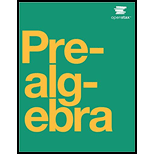
Concept explainers
a.
Find the expected number of students who fail in the exam.
Find the standard deviation of number of students who fail in the exam.
a.
Answer to Problem 58CE
The expected number of students who fail in the exam is 6.
The standard deviation of number of students who fail in the exam is 2.32
Explanation of Solution
In order to qualify as a binomial problem, it must satisfy the following conditions:
- There are only two mutually exclusive outcomes, students fail in the exam and students do not fail in the exam.
- The number of trials is fixed, that is, 60 students.
- The
probability is constant for each trial, which is 0.10. - The trials are independent to each other.
Thus, the problem satisfies all the conditions of a binomial distribution.
The mean can be obtained as follows:
Therefore, the expected number of students who fail in the exam is 6.
The standard deviation can be obtained as follows:
Therefore, the standard deviation of number of students who fail in the exam is 2.32.
b.
Find the probability that exactly two students will fail.
b.
Answer to Problem 58CE
The probability that exactly two students will fail is 0.0393.
Explanation of Solution
The conditions for normal approximation to the binomial distribution are checked below:
The number of students
Condition 1:
Condition 1 is satisfied.
Condition 2:
Condition 2 is satisfied.
Conditions 1 and 2 for normal approximation to the binomial distribution are satisfied.
Let the random variable X be the number of students who fail in the exam follows
The probability that exactly two students will fail can be obtained as follows:
Step-by-step procedure to obtain the probability of Z less than –1.51 using Excel:
- Click on the Formulas tab in the top menu.
- Select Insert function. Then from category box, select Statistical and below that NORM.S.DIST.
- Click OK.
- In the dialog box, Enter Z value as –1.51.
- Enter Cumulative as TRUE.
- Click OK, the answer appears in Spreadsheet.
The output obtained using Excel is represented as follows:

From the above output, the probability of Z less than –1.51 is 0.0655.
Step-by-step procedure to obtain the probability of Z less than –1.94 using Excel:
- Click on the Formulas tab in the top menu.
- Select Insert function. Then from the category box, select Statistical and below that NORM.S.DIST.
- Click OK.
- In the dialog box, Enter the Z value as –1.94.
- Enter Cumulative as TRUE.
- Click OK, the answer appears in the Spreadsheet.
The output obtained using Excel is represented as follows:

From the above output, the probability of Z less than –1.94 is 0.0262.
Now consider the following:
Therefore, the probability that exactly two students will fail is 0.0393.
c.
Find the probability that at least two students will fail.
c.
Answer to Problem 58CE
The probability that at least two students will fail is 0.9738.
Explanation of Solution
The probability that at least two students will fail can be obtained as follows:
From Part (b), the probability of Z less than –1.94 is 0.0262.
Now consider,
Therefore, the probability that at least two students will fail is 0.9738.
Want to see more full solutions like this?
Chapter 7 Solutions
STATISTICAL TECHNIQUES FOR BUSINESS AND
- Show all workarrow_forwardplease find the answers for the yellows boxes using the information and the picture belowarrow_forwardA marketing agency wants to determine whether different advertising platforms generate significantly different levels of customer engagement. The agency measures the average number of daily clicks on ads for three platforms: Social Media, Search Engines, and Email Campaigns. The agency collects data on daily clicks for each platform over a 10-day period and wants to test whether there is a statistically significant difference in the mean number of daily clicks among these platforms. Conduct ANOVA test. You can provide your answer by inserting a text box and the answer must include: also please provide a step by on getting the answers in excel Null hypothesis, Alternative hypothesis, Show answer (output table/summary table), and Conclusion based on the P value.arrow_forward
- A company found that the daily sales revenue of its flagship product follows a normal distribution with a mean of $4500 and a standard deviation of $450. The company defines a "high-sales day" that is, any day with sales exceeding $4800. please provide a step by step on how to get the answers Q: What percentage of days can the company expect to have "high-sales days" or sales greater than $4800? Q: What is the sales revenue threshold for the bottom 10% of days? (please note that 10% refers to the probability/area under bell curve towards the lower tail of bell curve) Provide answers in the yellow cellsarrow_forwardBusiness Discussarrow_forwardThe following data represent total ventilation measured in liters of air per minute per square meter of body area for two independent (and randomly chosen) samples. Analyze these data using the appropriate non-parametric hypothesis testarrow_forward
 Glencoe Algebra 1, Student Edition, 9780079039897...AlgebraISBN:9780079039897Author:CarterPublisher:McGraw Hill
Glencoe Algebra 1, Student Edition, 9780079039897...AlgebraISBN:9780079039897Author:CarterPublisher:McGraw Hill Big Ideas Math A Bridge To Success Algebra 1: Stu...AlgebraISBN:9781680331141Author:HOUGHTON MIFFLIN HARCOURTPublisher:Houghton Mifflin Harcourt
Big Ideas Math A Bridge To Success Algebra 1: Stu...AlgebraISBN:9781680331141Author:HOUGHTON MIFFLIN HARCOURTPublisher:Houghton Mifflin Harcourt
 Holt Mcdougal Larson Pre-algebra: Student Edition...AlgebraISBN:9780547587776Author:HOLT MCDOUGALPublisher:HOLT MCDOUGAL
Holt Mcdougal Larson Pre-algebra: Student Edition...AlgebraISBN:9780547587776Author:HOLT MCDOUGALPublisher:HOLT MCDOUGAL



